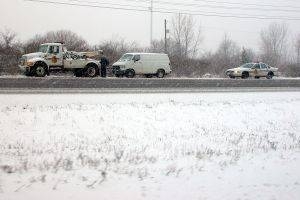
When someone purchases a motor vehicle, recreational vehicle or other physical item, he typically goes to bank or a financial lender and borrows money to pay for the item. If the borrower fails to make the monthly payments or meet the loan requirements, he will default on the loan and run the risk of having the item repossessed. If no payments or arrangements have been made in over 3 months, the repossession company will begin the repossession process.
Once the lender has contacted a repossession company, the repo company goes to work immediately trying to collect the property. Many times the repo company will have an investigative person on staff, called a skip tracer. The skip tracer uses her investigation techniques via information from the lender, references listed on the original loan application and Internet searches and phone call inquiries. Many times, employees of the repossession company in groups of two or more, mainly at night or very early in the morning, collect items that are outside of garages or outbuildings on the property. Generally, a flatbed truck or a semi is used to load the property onto the truck. Most repossessions go smoothly, and the borrower willingly gives up the property to the repossession company. If the company has trouble locating the property, it becomes creative in finding it by posing as a delivery company or even calling references listed on the application to gain better insight and information. Sometimes if the property is not willingly handed over, then a search warrant is issued by the police department.
Typically, within 24 hours the repossession company delivers the property back to the bank or lender. There are occasions when property is slightly damaged or malfunctions when it is returned to the lender, due in part from previous damage from the owner or even damage during repossession or transit. Most repossession companies sign waivers that they are not responsible for extensive damage to the property during the repossession process; this protects them from being sued as well as being held liable for obtaining and transporting the property. Once the repossession company gains control over the property and delivers it to the lender or the bank, the property is assessed for damage and value. Pictures may be taken as well as a new appraisal to assess how much the property can be sold or scrapped for. Usually, the property is cleaned and repaired, then sold at auction. The outstanding balance on the property is then sent to a collections department in an effort to collect remaining funds from the original borrower.